Ghosts of Queen's Court: Part 1 (Haunted Fordham University)

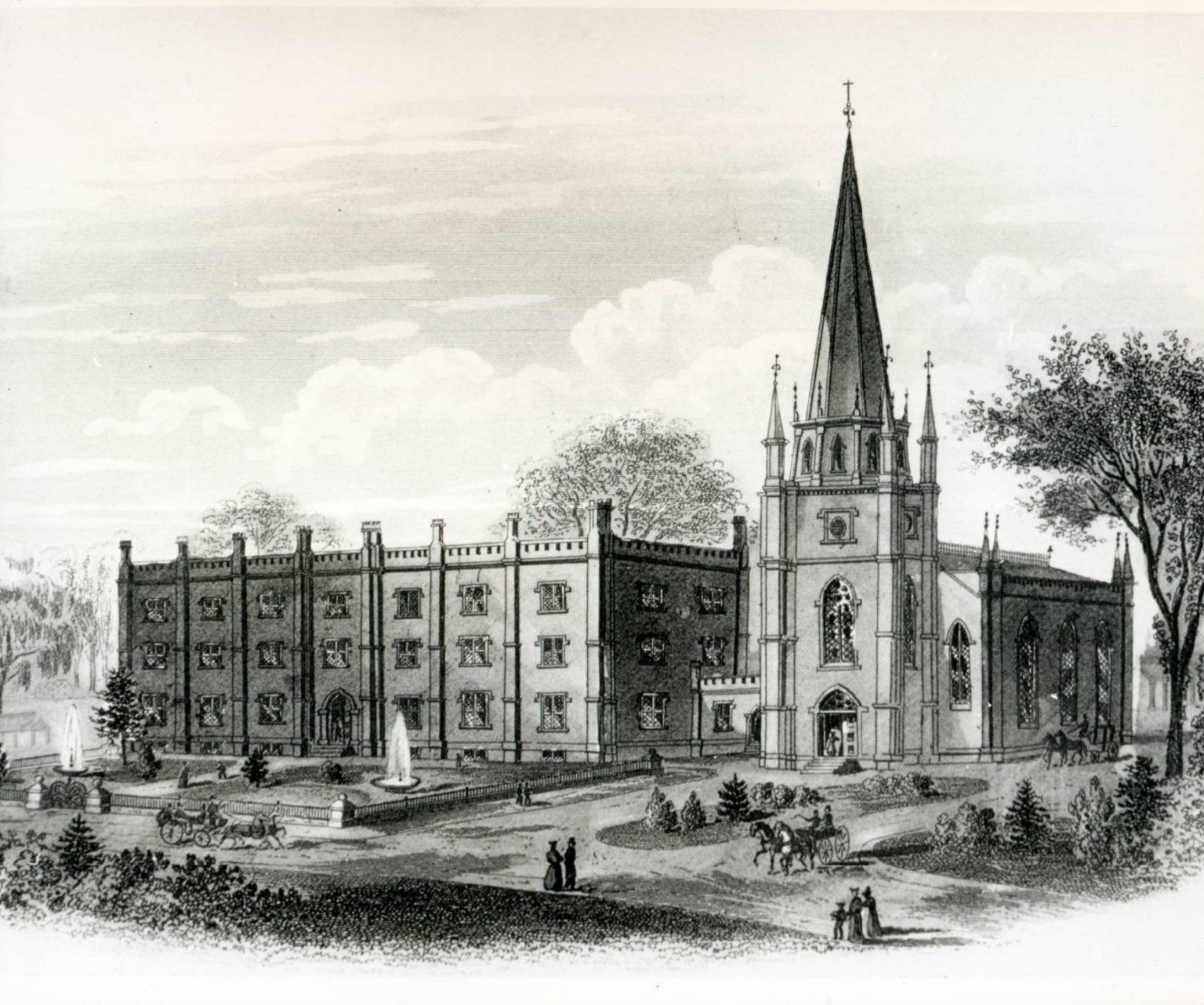
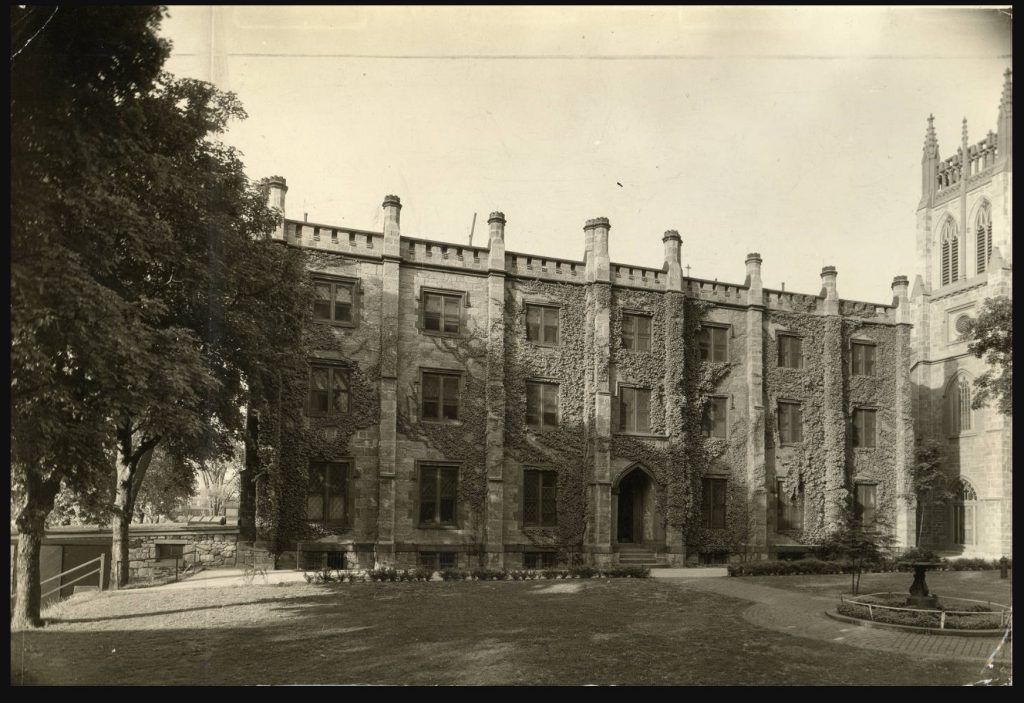
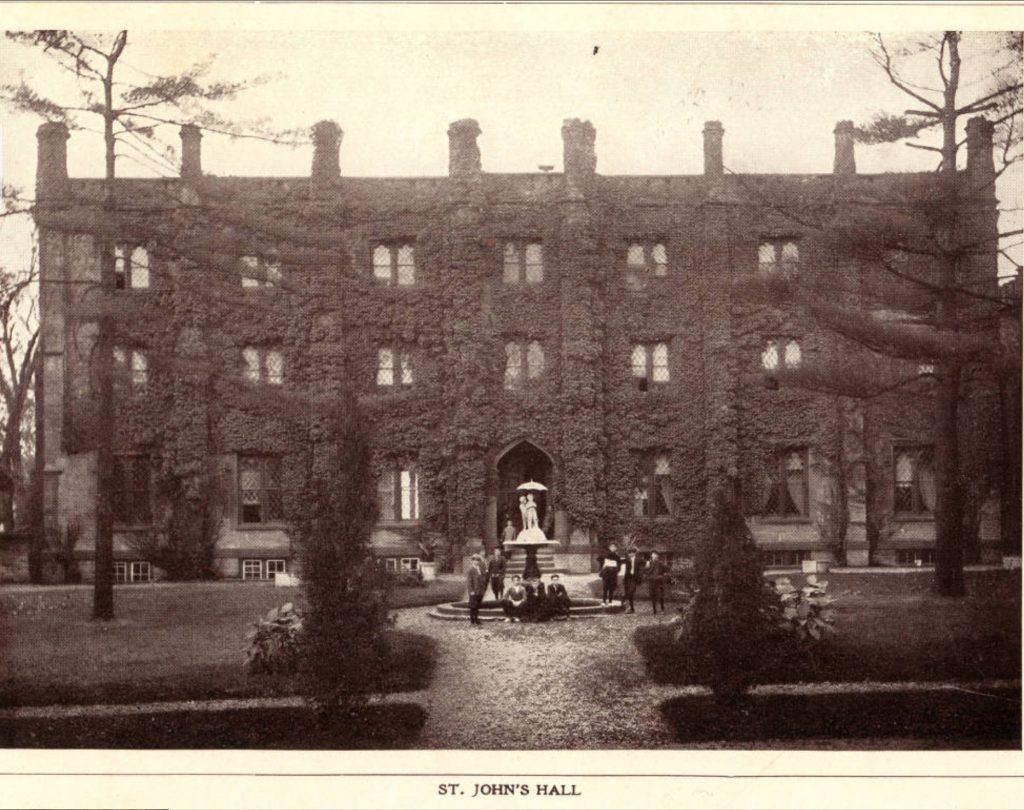
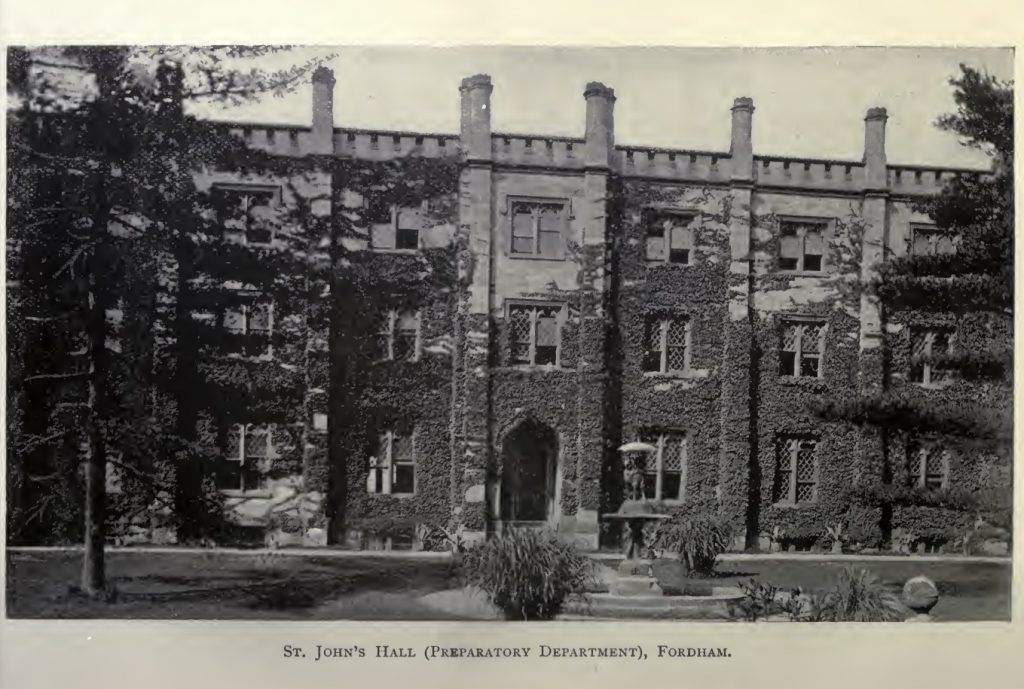
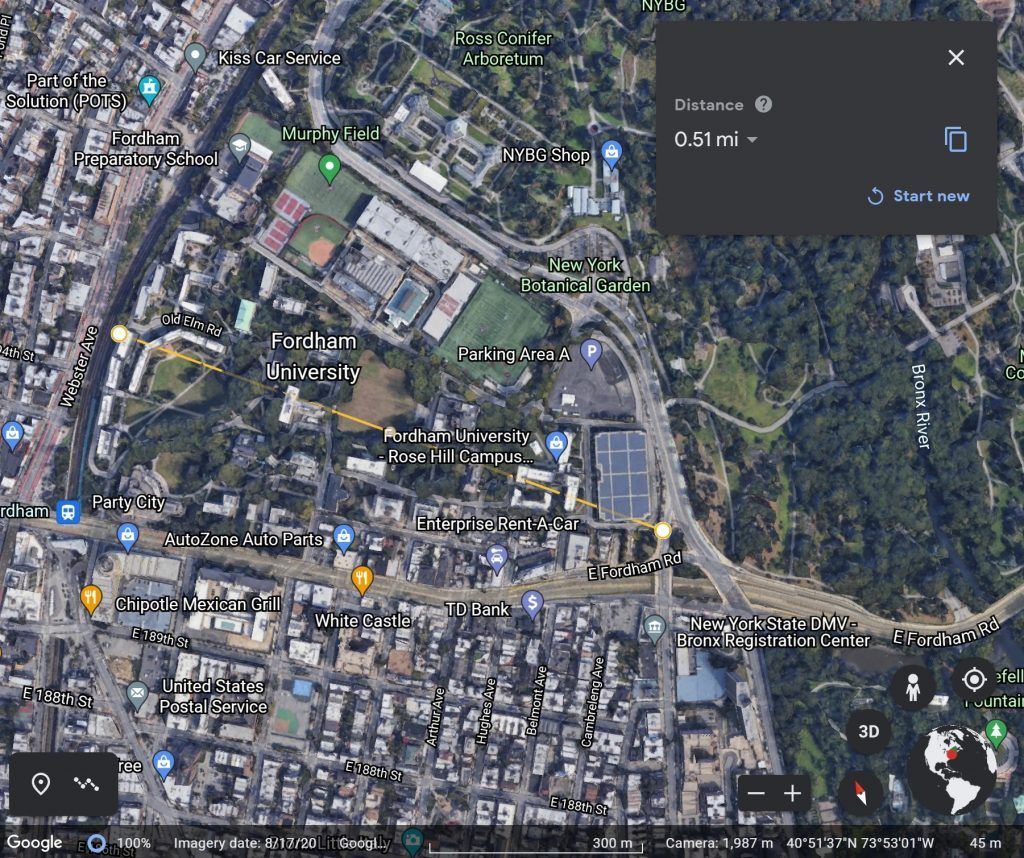
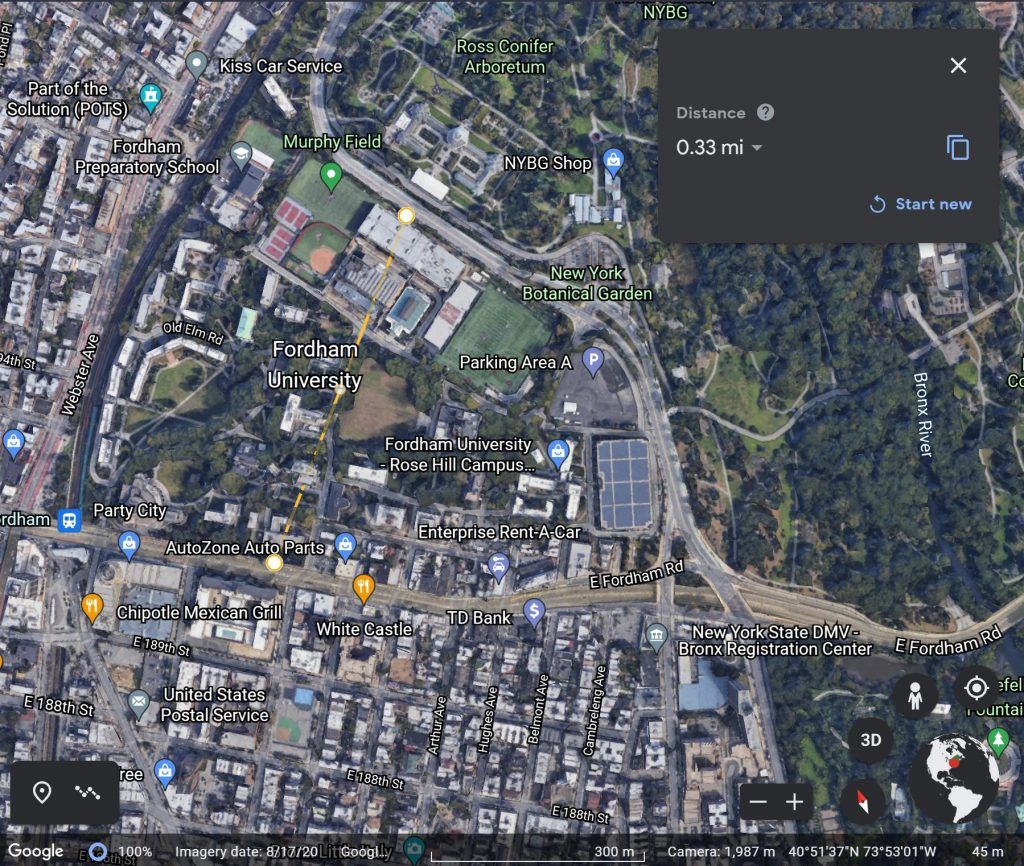
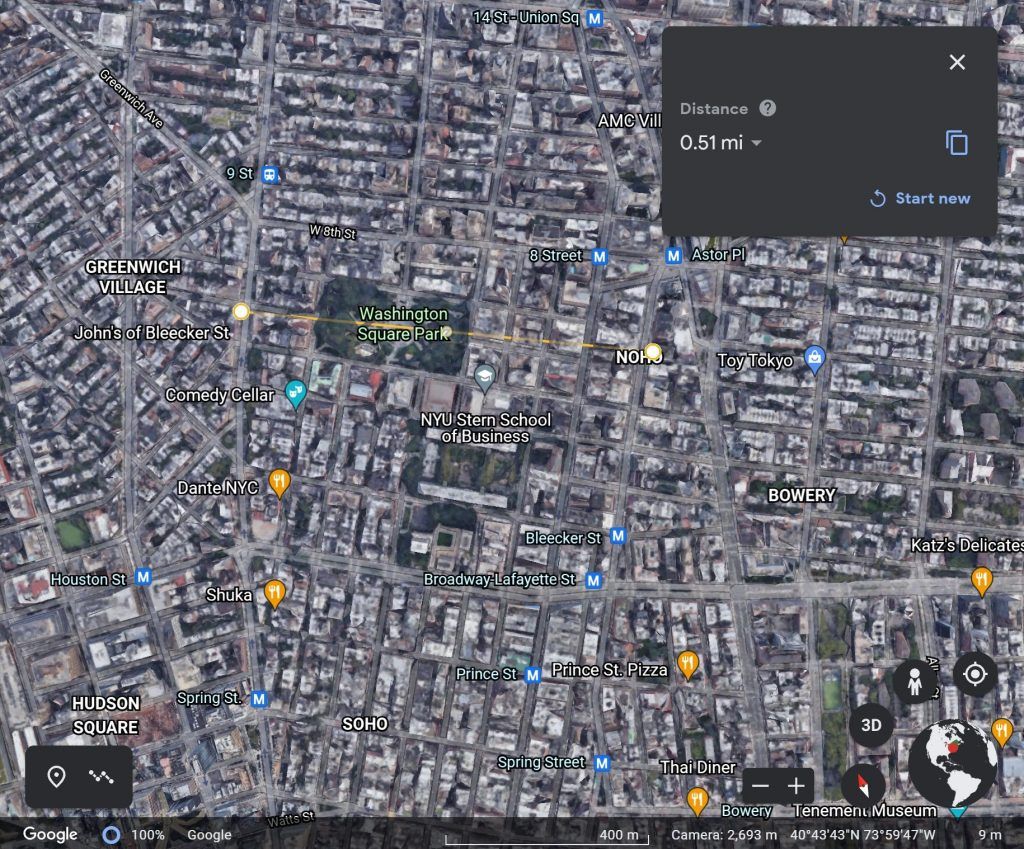
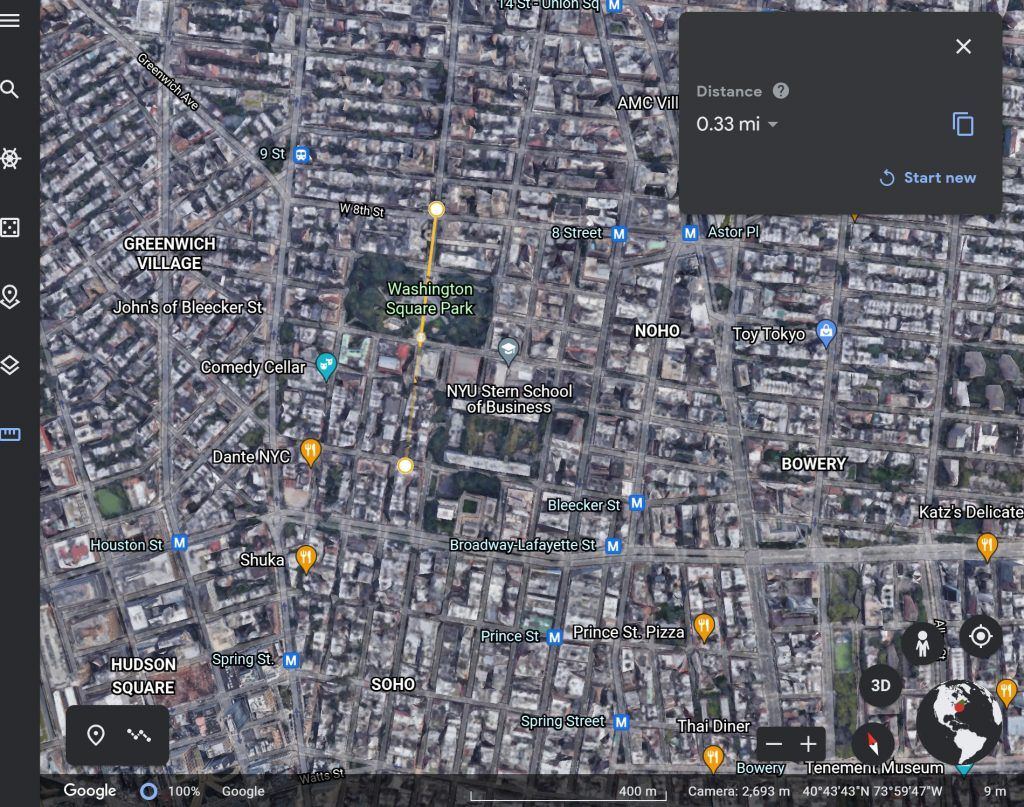
A look at one of the most concentrated areas of hauntings in all of New York City: Fordham University in the Bronx. This is part 1 of a look at the ghosts of Queen’s Court, the oldest dorm on campus.
Ghostly priests, secret tunnels, black dogs, poltergeist activity, multiple burial grounds, housing in an old morgue, and more abound at Fordham University, at a campus in the Bronx that’s about half a mile wide. This is part 1 of a look at Queen’s Court, the university’s oldest dorm, which was built in 1845, was once a seminary, and has a number of hauntings and urban legends attached to it.
Highlights include:
• A groundskeeper ghost who still does his rounds
• The ghost of a 19th century seminarian
• A digression about Stone Tape Theory
• A theory about why Fordham’s ghost stories were kept quiet until the 1970s
• A conceited archbishop
Episode Script for the Ghosts of Queen’s Court
DISCLAIMER: I’m providing this version of the script for accessibility purposes. It hasn’t been proofread, so please excuse typos. There are also some things that may differ between the final episode and this draft script. Please treat the episode audio as the final product.
- For this series, I’m going to talk an area that I would argue has one of the greatest concentrations of hauntings and dark history in all of NYC: Fordham University in the Bronx.
- Fordham happens to be my alma mater, so I’m excited to look at the history, hauntings, legends, lore, and my own personal experiences of the paranormal there.
- Fordham is known as one of the most haunted universities in the United States. For this series, I’ve identified at least 12 buildings on Fordham’s Bronx campus that have supposed hauntings
- The Fordham hauntings are kind of bananas, and the campus has so many creepy elements in its history.
- Despite the modest size of the area, here’s some of the stuff that happened in this area that I’m going to cover in this series:
- Many of them include encounters with ghostly priests, in many cases where the person didn’t realize they were speaking with someone deceased until someone told them later on.
- There’s a case of what seems like a ghost-priest possibly performing an exorcism.
- There’s an entire dorm on Fordham’s campus (which I lived in, and which most of my paranormal experiences on campus happened in) that used to be the medical school building, and contained a medical amphitheater for demonstrating operations and I assume cadaver dissections–and you can actually see where the amphitheater was by looking at the building in google satellite view. Also, cadavers were kept in the basement of that building, and the location of the building was supposedly even selected for ease of cadaver transportation.
- There’s a series of secret underground tunnels connecting the campus’s oldest buildings.
- There was an old hospital that was leveled to become the university’s parking lot.
- There’s black dogs, ghost children, poltergeist activity.
- There’s even a cemetery on campus where the bodies have been disinterred and moved not once, but TWICE, and now a dorm is built on top of one of the past locations.
- All the good paranormal and creepy stuff is here! Part of the Exorcist was even filmed here
- And lots more!
- So, as an aside, I’d like to make a claim here that I don’t think has been made before: I believe that Fordham University is NYC’s most haunted half-mile mile.
- I’d like to challenge fellow NYCers to find an area of similar size that has a similar level of hauntings and creepy history.
- So, to explain my methodology here:
- I went on google earth and measured Fordham’s campus using their measurement tool. The campus is shaped like a sideways triangle pointing eastwards, so I measured the longest part of the point, and the middle of the slanting sides. Its about .51 miles wide, and .33 miles tall. I’ll put the screengrabs of the measurements in the shownotes for this episode so you can take a look and see how I measured.
- I think that the Village, near NYU and Washington Square Park, might be able to give Fordham a run for its money, maybe, but I’m not convinced that there’s an area of the Village of a similar size to Fordham’s campus that has a similar number of hauntings.
- I will also include screengrabs in the shownotes measuring out the same distance in the area around Washington Square Park, so you can see what I mean in terms of scale.
- But if anyone would like to challenge me on what NYC’s most haunted half-mile would be, I’d really love to know of a similarly haunted area so I can research it, so please email me at buriedsecretspodcast@gmail.com or message me on instagram @buriedsecretspodcast if you have a different candidate you’d like to put forth for NYC’s most haunted mile.
- I would actually love to be refuted on this, because that would mean that there’s somewhere in NYC with even more hauntings in a small area than Fordham, so please, change my mind.
- But until then, I, a random podcaster, would like to declare Fordham University’s Rose Hill campus as the most concentrated area of hauntings and dark history in all of NYC.
- In characteristic form, I’ve done an enormous amount of research, so I don’t know exactly how long this series will be. Right now, I have 9 episodes worth of notes, so this could end up as long as the Ouija board series I did last year, but I’m going to try to combine some episodes because with a biweekly publication schedule, 9 episodes will take a while.
- If you’re a longtime listener, you know that I’m not here to uncritically repeat ghost stories.
- I want ghost stories to be true when I hear them, but I’m somewhat of a skeptical believer. When examining hauntings, I like to look closely at the history of the area, of the building where it occurred in, and at any other factors that could have bearing on the story.
- So for example, if there’s a detail in an urban legend, I like to do everything I can to corroborate that detail. At the end of the day, you can’t really verify the veracity of a ghost story, so what you have to do is look at the story, look for holes, look for specificity and for details that you can confirm, which help to determine whether something is just a fun urban legend, or whether it’s something that might really be somewhat credible.
- So that’s a big part of why I have so much material here. I’m all about getting the context and looking at things from all angles, and looking for patterns, etc.
- My goal is to present this in a way that will be interesting to anyone who’s into in university hauntings, or hauntings in general, but I also expect a number of Fordham ppl to listen to this.
- So I wanted to address Fordham folks real quick, off the top:
- If you went to Fordham and had a paranormal experience there, and want to share it, please let me know! You can email me at buriedsecretspodcast@gmail.com.
- So far, I’ve written this series is just using information that I was able to find that had been published online or in one of the university’s newspapers, or in a book, as well as my own experiences, but I’d love to incorporate any other encounters with the paranormal that people have had because I know there’s way more out there that just hasn’t been published.
- Also, if any current Fordham students are listening and are interested in paranormal investigation, let me know if you’re potentially interested in investigating anything at Fordham together.
- If you went to Fordham and had a paranormal experience there, and want to share it, please let me know! You can email me at buriedsecretspodcast@gmail.com.
- At this point, I have been thinking about the Fordham hauntings for–I was going to say a decade, but at this point, I’ve really been thinking about this closer to 15 years than to a decade, which, I just realized, horrifyingly, is almost half my life.
- I didn’t start this more in-depth research until a year and a half ago. And to be fair, I’ve been researching many other paranormal and historical topics for the podcast during that time, so I’ve kind of picked up this research every few months, worked on it a bit, and then put it back down.
- But still, the research for this series has been a large undertaking.
- I can tell you that this is almost certainly going to be the most complete collection of Fordham ghost stories that you’ll be able to find as of right now.
- It seems that I have the dubious honor of being the person who cares about this topic the most.
- So, with that out of the way: in this episode, I want to talk about the dorm I lived in freshman year, Queens Court. I’ll also mention the neighboring University Church, and the Honors program building, Alpha house. All three of these are some of the older buildings on campus, built in the 19th century.
- But before I get to those specific buildings, let’s get to some background info about what Fordham University is, for folks who may not be familiar with the school:
Fordham Background Info
- So, if you don’t live in the tristate area, or the northeastern part of the US, you may not have heard of Fordham University. But you have heard of its alumni, which include obviously the most important alumna, Lana Del Rey, as well as actors Denzel Washington, Alan Alda, Patricia Clarkson, and Taylor Schilling, authors Mary Higgins Clark and Don Dilillo, former Green Bay Packers coach Vince Lombardi, and some politicians including disgraced former NY Governor Andrew Cuomo and also one Donald J. Trump, who attended Fordham for two years before transferring elsewhere.
- And there’ve also been a number of different famous faculty members and lecturers. The most interesting one for our purposes here is probably Carl Jung, who of course is hugely influential in the paranormal world, having written about tons of paranormal stuff including alchemy and UFOs.
- Jung gave a series of lectures at Fordham during a conference in 1912, where he argued against some of Freud’s theories: that’s supposedly the cause of their famous schism
- So what is Fordham?
- Fordham University is a private, Catholic college that’s run by Jesuits.
- It’s the third oldest university in NY state (after NYU and Columbia), and it’s the oldest Catholic institution of higher education in the northeast
- Fordham was originally founded in 1841 by Archbishop John Hughes, aka Dagger John, who I talked a lot about in one of the Calvary Cemetery episodes.
- As with many other things he had a hand in, Hughes named the school after himself, calling it St. John’s College. (At the time, St. John’s College was both a seminary for training new priests, and a college.)
- A few years later, the college would be purchased by a group of French Jesuits from Kentucky, and from then on, it was a Jesuit university.
- The name would be changed to Fordham University in 1907. Fordham is the name of the neighborhood its in, which was once the location of a farm called Fordham Manor.
- Fordham has a handful of campuses, including the one in the Bronx, called Rose Hill, which is the largest campus and the one I lived on, one at Lincoln Center in Manhattan near the southwest corner of Central Park. There are also some smaller campuses including one in London, which I think is new is the past few years, and one in the suburbs of NYC in Westchester County.
- Most of Fordham’s ghost stories are centered around the Rose Hill campus, though later in the series, I’ll also share what I was able to find about Lincoln Center.
- To set the stage a bit more, while Rose Hill is located in the Bronx, it doesn’t look like an urban campus: it has lots of green space and collegiate gothic buildings.
- It’s so pretty that it’s often used as filming locations, especially when the script calls for kind of an unnamed private northeastern fancy looking school.
- It was really normal to come across film crews around campus.
- But probably the three most famous movies filmed there were A Beautiful Mind, Love Story, and The Exorcist.
- Fordham has a really lovely campus, which was one big attraction for me, and for many students. It’s great to be in NYC but to also have this beautiful green campus as your home base.
- But I was also very much drawn in by Fordham’s ghost stories, because it’s considered one of the most haunted colleges in America. And the creepiness of Fordham was a definite selling point for me.
- And while I did encounter some weird stuff, it wasn’t what I’d expected. I’d hoped to meet a friendly Jesuit ghost in the library late at night who could help me with my homework, but instead I got a pretty typical grab-bag of weird paranormal crap that I’m still turning over in my head and trying to decipher, without much success, even after all of this other research.
- So that’s some basic background on the university.
Paranormal Legends on Campus
- Fordham’s an interesting school, because it’s pretty proud of its hauntings. There are campus ghost tours, there’s a part of the library’s website dedicated to chronicling Fordham’s most famous hauntings, etc.
- So if you search the Fordham newspaper archives, as I have, you’ll see 283 results for search term ghost. It’s really unfortunate that every year, there’s a mass of the holy ghost, so a lot of those results are just basic schedules of when that mass will be each year, or writeups of how the mass went.
- So the first “real” mentions of the Fordham hauntings appear in The Ram, the Rose Hill student newspaper, in the 1970s. A lot of the best stories came from articles in the 70s and 80s.
Queens Court, University Church, and Alpha House
- Queens Court was where I lived freshman year. It’s a sort of U-shaped building with a courtyard in the middle, made of three wings, called St. John’s Hall, Bishop’s Hall, and St. Robert’s Hall
- I believe that Robert’s is technically called St. Robert Bellarmine Hall, but everyone calls it Roberts. Robert Bellarmine is a saint from the 16-17th century who was big in the counter-reformation.
- He was a Jesuit cardinal
- He’s also known for adjudicating the Gallileo Affair. I guess he was like, “heliocentrism is fine as long as you treat it as a hypothetical theory and not a real thing,” and later he ended up delivering the inquisition’s injunction against Galileo, but it sounds like they maybe remained on good terms?
- Anway, back to Queens Court: St. John’s Hall was built–I think–right around 1845, when St. John’s College was founded.
- I wanted to read a bit from the book A history of St. John’s College, Fordham, N.Y by Thomas Gaffney Taaffe (1891) describing Queens Court–or, at the time, it was only St. John’s Hall, because I find the descriptions in the book delightfully romantic and fanciful in a very 19th century sort of way:
- “Turning your steps to the right, after a brief interval of flagged walk bordered by garden fence and shrubbery, you come to the most charming spot in this collection of noble buildings and picturesque surroundings. St. John’s Hall, the preparatory school for small boys attached to the college, is situated at the extreme northwest of the college grounds. Adjoining it is the parish church of Fordham, the Church of Our Lady of Mercy. Church and Hall were built in 1845 by Archbishop Hughes, the latter as a seminary for the education of priests in the diocese of New York, and the former as the seminary chapel. Both buildings are of stone quarried on the college property, but different from that used in other buildings.”
- Just to pause a sec:
- first, I wish he had phrased “preparatory school for small boys” in a slightly less creepy way.
- Second, interesting to note that the stone for these buildings were quarried basically on site. I talked about this some in my islands about Roosevelt Island, the idea of stone being quarried right near the buildings were being built, but for whatever reason I find that detail really interesting about older buildings in NYC.
- I don’t know, maybe it’s the idea of the close connection to a place, like there’s something being built but the materials are being ripped right out of the ground right there? Like the raw materials aren’t going far, etc. I can’t quite say why it interests me so much, but it may just be that it’s tickling something in the back of my mind about elemental or land spirits that I just can’t quite articulate. Idk, but mentioning it here.
- Alright, I wanted to read a bit more from the book about St. John’s Hall, since its early history is easy to gloss over and I think it’s important to know when thinking about hauntings there:
- “The Hall is an imposing structure, the massive arched entrance, the old-fashioned latticed windows, the vine-covered walls, all combining to produce and effect at once grand and impressive. The seminary was moved in 1860 to Troy, N.Y., and the buildings sold to the college authorities. . . . For a long time the Hall was little used, the classes of Chemistry and Physics alone being held there, but in 1885 . . . It was thoroughly overhauled and fitted up to fill the requirements of the preparatory school.”
- Some of the legends and ghost stories I was told about Queens court when I moved to campus alluded to the building’s time as a seminary, so I think it’s worth noting that it was a seminary for a very short time, 15 years, from 1845 to 1860.
- Though, sidenote: the seminary was called St. Joseph’s, and as the book
- Fordham: A History of the Jesuit University of New York: 1841-2003 by Thomas J. Shelley (2016) points out:
- The [seminary’s] name, like the name of the college, was selected by Hughes, which did not surprise one savvy New York Jesuit historian, Father Francis X. Curran, who pointed out that the bishop’s full name was John Joseph Hughes.
- So basically, he named the college St. John’s and the seminary St. Joseph’s. He loved naming things after himself.
- The book goes on to talk about how there are beautiful gardens and a fountain in front of St. John’s Hall, and it also describes the floorplan of the hall a bit more, which I think is worth mentioning:
- “From front to rear of the building runs a broad hallway. On either side and on the floors above are the study hall, class-rooms, and dormitories, and in the basement are the gymnasium and drill-room. At the rear, fronting the railroad, is the boy’s playground.”
- I believe that where that playground was, there are now two dorms: Alumni Court North (now called Loschert) and South
- So a lot of Fordham prep stuff is associated with Queens Court, in addition to the old seminarians.
- So, as the passage I read mentioned, Queens Court is right next to the University church. At one point, they were even connected by what looks like a hallway.
- So, one of the most famous legends regarding the University Church is Edgar Allen Poe. Because no collection of ghost stories would be complete without Poe, right?
- Edgar Allen Poe moved to the Bronx in 1846, lived in the neighborhood of Fordham and used to walk over to campus and play cards and drink with the Jesuits.
- The bells of the University Church supposedly inspired the Edgar Allen Poe poem The Bells. Poe wrote the Bells in 1849.
- I wanted to read a bit about Poe at Fordham, which was then called St. John’s College, from Fordham: A History and Memoir, Revised Edition by Raymond A. Schroth (2009)
- “The poet found the new St. John’s College, especially under the direction of the Jesuits, a most congenial place. The campus was not more than a twenty-minute walk down the hill from the sparsely settled neighborhood where he and his ailing wife, Virginia, along with Virginia’s mother, Mrs. Maria Clemm, had settled into a small, white three-room cottage in the Kingsbridge section.”
- So then Virginia died and he fell into a deeper depression:
- “Eventually he found solace in long walks. At four in the morning, he would stroll west to the aqueduct bridge, High Bridge, whose granite arches, 145 feet high, stretched across the Harlem River. Often Poe escaped to St. John’s.
- Passing no more than a few dozen houses and farms along the way, he could saunter down the gradual slope of what is now Kingsbridge Road, which then extended to the New York and Harlem railroad tracks. . . .
- When Poe came in the early evening, around six, he arrived in time for the Angelus. The great bells in the tower of the college church, which also served as the local Our Lady of Mercy parish, rung out in the traditional prayer: “The Angel of the Lord appeared unto Mary, and she was conceived of the Holy Ghost.” . . . With the bell tower just a few yards away, he would not just hear the bells but also feel their vibrations as their tolling fled the tower and sent some trembling shivers through his fragile frame. A glass of wine with the fathers would calm his nerves.
- There’s a large bell in the Fordham archives that once hung in the church and that, tradition says, inspired Poe’s famous poem “The Bells.” Unfortunately for the tradition, contemporaries and scholars have a list of competing churches, such as the Church of the Ascension and Grace Church, in lower Manhattan near the house of Poe’s friend Mrs. Schew, who claims he wrote the first two verses there. According to another tradition, this bell hung in the cupola of the mansion and called students to class and meals.
- Poe liked the Jesuits, as he told a friend, because they were “highly cultivated gentlemen and scholars, they smoked and they drank, and played cards, and never said a word about religion.” . . .
- After their walks, the fathers turned Poe loose in their library, where he sometimes lingered so late they would offer him a bed for the night. If—and this happened only rarely—he joined the fathers in a glass of wine and his symptoms began to appear, someone would gently offer an arm and say, “Come, Poe, we will go home now.”
- So that’s Edgar Allen Poe and the university church.
- Now, when I was a freshman, I was told a story, I believe by the RAs, about a priest, or maybe a student training to become a priest, who lived in St. John’s Hall, back when it was a seminary.
- Content warning for suicide here, just skip forward a minute or so if you don’t want to hear about that. I try not to give suicide details as a general rule, but is slightly more detail than I would usually give, just because the story doesn’t work if I don’t say how this person killed himself.
- The story goes that back when Queens Court was a seminary, it was extremely cold in the hall.
- One priest couldn’t stand it anymore, so he hanged himself. I was told that when they found him, his feet were banging against the radiator, so nowadays, when you hear the radiators banging, it just may be the ghost of this priest.
- Okay, that’s silly, because radiators are really loud, especially old ones, it’s a thing. A loud radiator, in and of itself, does not mean that a location is haunted. But it’s a fun, creepy story that RAs tell new students, whatever.
- It’s apparently so commonly told that the book Ghosthunting New York City by L’Aura Hladik (2011) even mentions that specific story and says that RAs tell it to scare freshmen.
- So I’ve always been like, eh, that story’s obviously BS made up to scare people.
- Here’s the interesting thing, though.
- In his 2016 book Fordham: A History of the Jesuit University of New York: 1841-2003, Thomas J. Shelley writes that after the first 4-5 years of the seminary’s history things were going pretty well. However, by around 1850, conditions had begun to deteriorate:
- There were repeated complaints that the poor living conditions in the seminary were impairing the health of the seminarians. One of the professors, Father
- Isidore Daubresse, admitted that the cold and dampness had led to the death of at least one student, but he claimed that the Jesuits had appealed to the diocese in vain for three years to rectify the situation.
- Moreover, said Daubresse, many of the seminarians came to them in poor health. “At vacations outside the seminary during the past several years,” he explained to his own superior, “some of them contracted cholera and other diseases. Should one be surprised then,” he asked, “that they return to the seminary in poor health?”
- The book doesn’t say if this death was a suicide, or not, but it is cagey and vague, and it seems weird that they weren’t like, “a student died of cholera” or similar.
- I really do wonder if there’s some truth to the legend about the seminarian’s suicide. And it’s one of those things: when part of a seemingly baseless urban legend starts to sound like it may be true, the rest of it suddenly appears in a different light.
- So, the story of a haunting from a priest early in the building’s history, despite the building having been used for many other purposes, like a prep school, leads me to a philosophical question, as well.
- If you’re a longtime listener, you know that a preoccupation of mine is this question: why do some spirits or entities haunt a location, and not others?
- This is an interesting metaphysical question that I don’t expect to find an answer to, but embedded inside it are some other questions, which are easier to try to tease out and examine, I think.
- Those other questions are: why do some locations have certain legends attached to them and not others? Why do some stories survive, and others fade out? Why, when some people have paranormal experiences, do they ascribe their cause to one historical figure (or past resident of an area) and not another?
- The answers to these questions are obviously long and complicated and could yield many hours of healthy debate.
- But the thing I’ve noticed is that one major thing seems to inform legends of hauntings, and to me legends informed by this are less credible:
- whoever had the greatest level of power and/or wealth in an area is more likely to be remembered than someone who had less power or wealth, and as a result, I believe that people are more likely to come up with an explanation behind their paranormal experiences that draw from the stories of the deceased people of the area who were best known
- I think it’s important to think critically about the stories we tell about hauntings, both from a historical analysis standpoint, but also from the standpoint of trying to assess what you think about the veracity of a claim.
- All this being said, I’m not trying to say that there’s any great injustice being done in this instance. I have no stake in whether ghost stories about Queens Court are about 19th century seminarians, students, or priests who died in the 20th century or later.
- And I don’t really think that a seminarian suffering in terrible living conditions is any more privledged than a student. In fact, I think the opposite is true.
- So for me, this is a point, a small point, in favor of this haunting potentially having some truth to it, despite also being an urban legend. We do know that conditions were bad, we do know that someone died, and that person is unnamed and pretty forgotten, so not exactly exciting fodder for a story that you’re making up.
- I always feel that stories of hauntings about better known people are more likely to be fake (or wishful thinking), than stories that are about lesser known people. And of course, the more details someone comes out of an experience with, the more likely I am to think it’s true, versus vague urban legends, etc.
- Anyway, I know that’s a long digression, but one thing that I do think is interesting about Fordham hauntings is that there are a number of them about priests who the person experiencing the phenomena wasn’t necessarily familiar with previously, etc.
- Also, there are famous people who’ve been associated with Fordham’s campus who, surprisingly, don’t have ghost stories about them, which I think is great, and which I think lends to the credibility of the other ghost stories. One of those figures is George Washington, who supposedly used the old manor at Fordham as a headquarters. The other figure is, of course, Edgar Allen Poe. I mean, if you want to make up a ghost story and you’re told you live on a haunted campus, wouldn’t you make up a story about Poe? I’m really impressed that the two most famous historical figures associated with the university seem not to have haunted it at all.
- So I’ve been going on for a while, and next episode will really focus a lot on these hauntings. But I wanted to tell one more short story of a Queens Court haunting.
- There’s a mention of Alpha House in the bit I’m going to read next, so I want to explain what the heck Alpha House is.
- Today, it’s like a classroom/study lounge for the honors program, but it was originally built in 1864 at the campus entrance at 3rd ave and Fordham Road. (That’s right around where the Fordham metro north train station is now) For years after that, it was the college bookstore.
- It was a gatehouse built from locally quarried stone, and it was built to test out the stone’s quality.
- It’s since been moved to the middle of campus, near Hughes Hall, which I’ll talk about in a later episode.
- So this come from The Ram, in an article that was published in 1983 and republished in 85 and 88:
- “Another ghost who likes to keep tabs on present-day Fordham is the spirit of the groundskeeper. When Alpha House was located at the Third Avenue gate entrance at the turn of the century, it was used to house Rose Hill’s groundskeeper and his family. One of his duties was to walk around campus at night to make sure all the buildings were secure. It’s said that one of his favorite tours was around St. John’s Hall, which he used to circle more than once swinging a small lantern. Reportedly he can be seen late at night circling the same building today, leisurely checking the doors and swinging his lamp.”
- Alright, so that’s the groundskeeper ghost. I haven’t heard of this haunting mentioned outside of the pages of The Ram, but I think it’s a nice, cozy story to close on.
- I’ve got a bunch of poltergeist activity to talk about in the next episode, as well as the most famous Queens Court ghost story, which involves a student talking to a ghost and not realizing it, AND a ghost performing a possible exorcism, so come back the week after next for that!
Sources consulted RE: the Ghosts of Queen’s Court
See sources page for the full source list for the series
Books consulted
- A history of St. John’s College, Fordham, N.Y by Thomas Gaffney Taaffe (1891)
- Fordham: A History of the Jesuit University of New York: 1841-2003 by Thomas J. Shelley (2016)
- Fordham: A History and Memoir, Revised Edition by Raymond A. Schroth (2009)
- Haunted Halls: ghostlore of American college campuses by Elizabeth Tucker (2007)
- The Big Book of New York Ghost Stories by Cheri Farnsworth (2019)
- The Graveyard Shift: A Family Historian’s Guide to New York City Cemeteries by Carolee Inskeep (2000)
- Ghosthunting New York City by L’Aura Hladik (2011)

